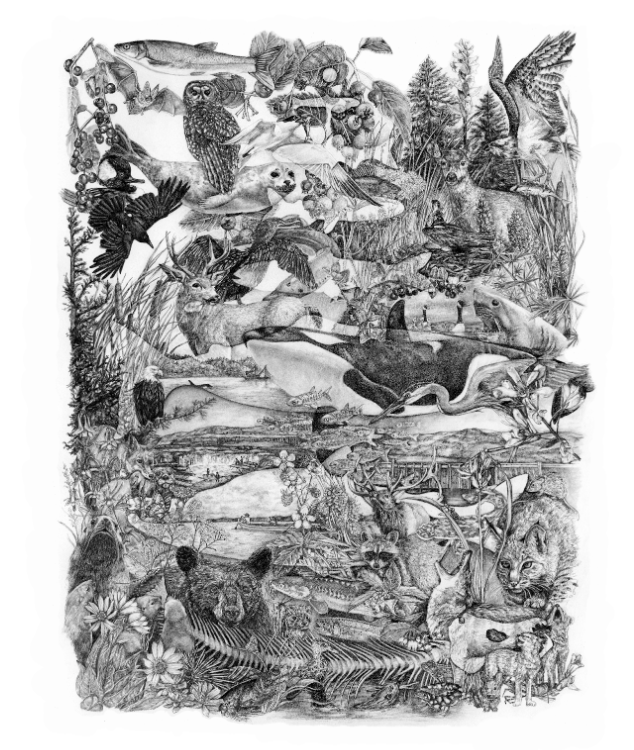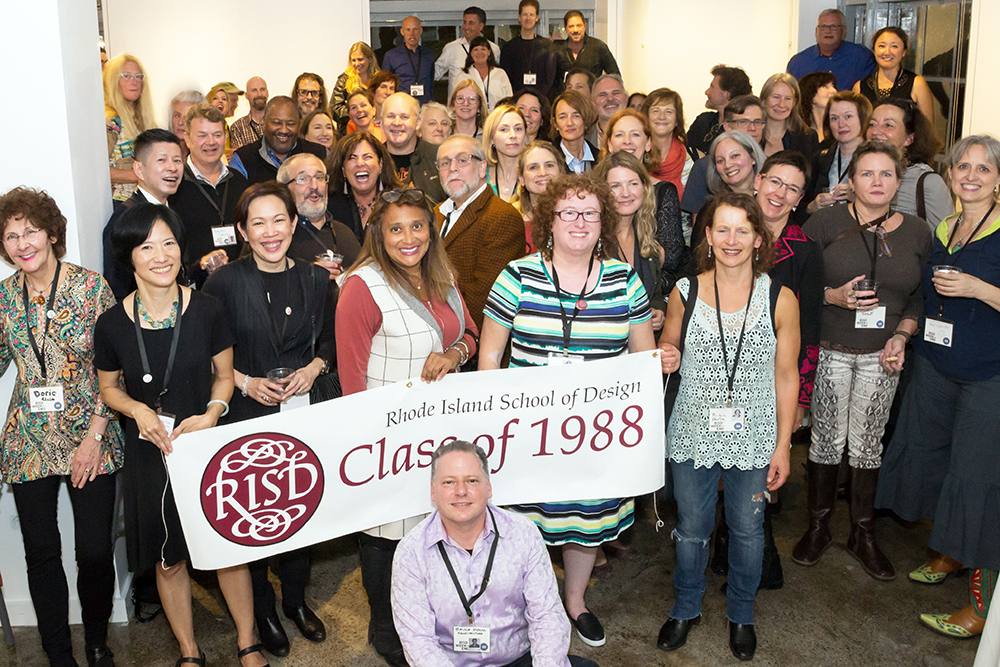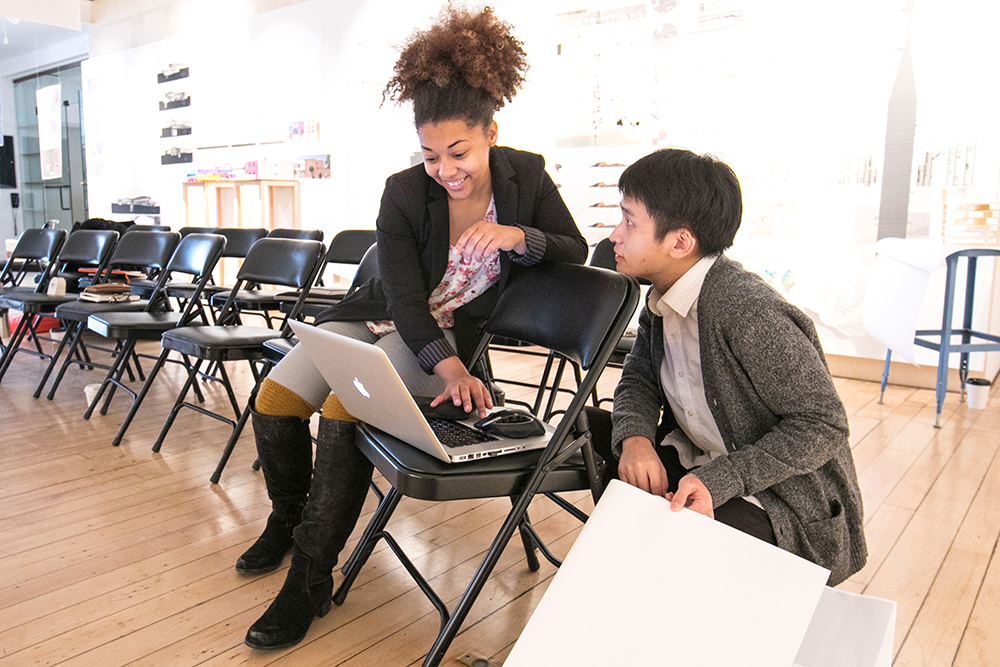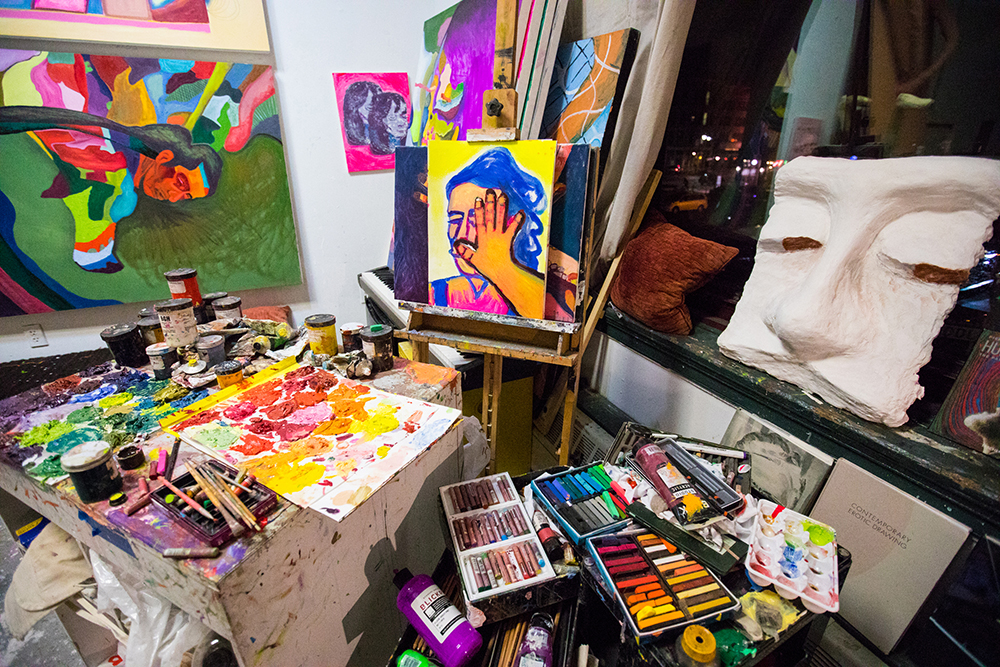"Salmon A Keystone Species Of The Columbia River Basin"
Nellie Geraghty 24 IL

Graphite on Bristol
16 x 20 inches
The NOAA West Coast Region and the Association of Independent Colleges of Art and Design's fifth annual Art and Science Fellowship fostered the creation of this poster. The 2025 Fellowship sought to explore the issue of reintroducing salmon to their native spawning grounds above the Grand Coulee and Chief Joseph dams.
2025 NOAA/AICAD Art Fellow Nellie Geraghty created this illustration to highlight salmon as a keystone species in the Columbia River Basin. She rendered nearly 100 species in Washington State that are connected in some way to the health and well-being of salmon and their cyclical journey from river to ocean and back again.
Whether a species is directly impacted by salmon or benefits indirectly from the healthy forest canopy and riparian corridors that salmon help sustain, these fish have played a vital role in shaping a thriving ecology across the state for thousands of years.
The poster includes beneficial, problematic, endangered, threatened, invasive, native, and endemic species that are all directly affected by the health of Washington state's salmon populations.
Over the past 100 years, many dams have been constructed in the Columbia River Basin and throughout the range of Pacific salmon without salmon passage, blocking the fish from their native spawning grounds. This has severed their vital connection and interdependence with the humans, plants, and animals living above these blockages who rely on salmon for survival. This project represents the commitment, collaboration, and progress that people have made to reconnect salmon to blocked areas. It is up to us, as humans, to continue to advocate for and support the return of these fish to the waterways and communities where they belong.
This project could not have been completed without the community members of the Upper Columbia United Tribes. Thank you for being so patient, supportive, and generous with your knowledge and time!
NOAA/AICAD Art and Science Fellowship 2025, NOAA West Coast Fisheries, Upper Columbia United Tribes, Somerson Sustainability Innovation Fund



